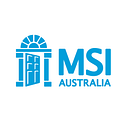We must ensure no one is left behind in the race to eradicate HIV. Together you and me can stop HIV.
In the past few years, most people’s lives have been turned upside down. Across the world, people have jumped on the COVID19 #WereInThisTogether #YouveGotThis bandwagons.
However there are other pandemics that have raged on for decades, and not everyone is on board.
The theme from UNAIDS for World AIDS Day on December 1st was “End inequalities. End AIDS. End pandemics” to call attention to those who are continually left behind.
Who is left behind in Australia?
According to the Australian Federation of AIDS Organisations (AFAO), there are about 29,000 people in Australia living with HIV as of 2020. The Australian National HIV Strategy 2018–22 has set an ambitious goal to reach virtual elimination by 2022, well before the United Nation’s member commitment to eliminate HIV/AIDS by 2030.
This year in Australia, the rates of HIV for Aboriginal and Torres Strait Islander peoples are 1.3 and 1.9 times higher compared to non-Indigenous people. There are other inequalities too. Women with HIV make up 11% of people living with HIV and 24% of HIV cases are among those who have heterosexual sex.
PrEP inequalities
Pre-exposure Prophylaxis (PreP) is one key strategy to eliminate HIV. PrEP is a medication taken to prevent HIV before someone is exposed to the virus. It’s incredibly effective, and if taken as prescribed it can reduce HIV transmission by almost 100%. HIV testing itself is also super accessible, you can order a free self-administered test kit here, or even pick up a self-test at your local pharmacy as of mid-December. Some services also offer PrEP via telehealth and many General Practitioners (GPs) can prescribe it.
Despite its efficacy, the use of options to prevent HIV including PrEP is lower among Aboriginal and Torres Strait Islander people which is a clear inequality. So while there is some progress towards the elimination of HIV, there is also more to be done. To ensure no one is left behind, it starts with you and me to take action.
How can we end inequities?
For health practitioners, educators and sexologists on the front lines, actions that can be taken include:
Find an opportunity in every opportunity to make HIV screening/treatment routine
Think about every and any opportunity to integrate STI and HIV prevention into routine consultations, counselling sessions, and training. In clinical settings, sexual health checks that test for STIs including HIV should be routinely offered. Not only will they detect HIV if someone has it, they will also reduce the stigma associated with HIV if it’s part of a regular health check. This can also generate sex-positive conversations about HIV, such as sharing knowledge about various prevention methods, PrEP, and regular HIV testing.
Deliver care that is kind and compassionate
In clinics, consider how values, assumptions and biases can affect the way that HIV testing is discussed. When talking about HIV, self-monitor body language, tone and pitch to see how you communicate about a topic that can be highly stigmatized. People living with HIV already have a lot on their plate, and if health workers can provide care that empowers them, it can lead them to have healthier and longer lives.
Advocate for Aboriginal and Torres Strait Islander health movements
Continue to uplift the organisations and community members who are already invested in addressing HIV inequalities.
Each year in the first week of December, to coincide with World AIDS Day, Aboriginal & Torres Strait Islander HIV Awareness Week — “ATSIHAW” is held to get a conversation going in our community about HIV prevention and the importance of regular testing for HIV.
The theme of ATSIHAW is “U AND ME CAN STOP HIV” and how it’s important to continue to advocate for HIV services during the pandemic. Every clinic can host their own ATSIHAW celebration, which can increase knowledge and awareness of the health needs of Aboriginal and Torres Strait Islander peoples.
There must also be robust and reliable health data collection on HIV. Smaller numbers of HIV rates among Aboriginal and Torres Strait Islander peoples suggests that we must be cautious about interpreting the data. This will lead to better epidemiological data to track and respond to changing rates in a timely manner.
Where to next?
In the sexual and reproductive health sector, it’s important for health workers, health educators and policymakers to continue to advocate for HIV services during the pandemic. With changing lockdowns and emerging COVID-19 variants in the news, we cannot lose momentum if we want to reach virtual elimination of HIV.
We must deliver targeted efforts to virtually eliminate HIV among Aboriginal and Torres Strait Islander peoples and we must continue efforts to ensure HIV continues to be eliminated altogether.
You and me can stop HIV.
Further Information and Support
Aboriginal and Torres Strait Islander HIV Awareness Week Health Promotion Resources
Brenna Bernardino is the Health Communications Officer at Marie Stopes Australia. Her cultural background is Timorese, Portuguese, and Torres Strait Islander. She has worked in research across Indigenous health, health promotion, and education in Australia and the United States. Brenna is passionate about reproductive justice and is also an ambassador for Aboriginal and Torres Strait Islander Awareness Week. You can follow Brenna on Twitter.
